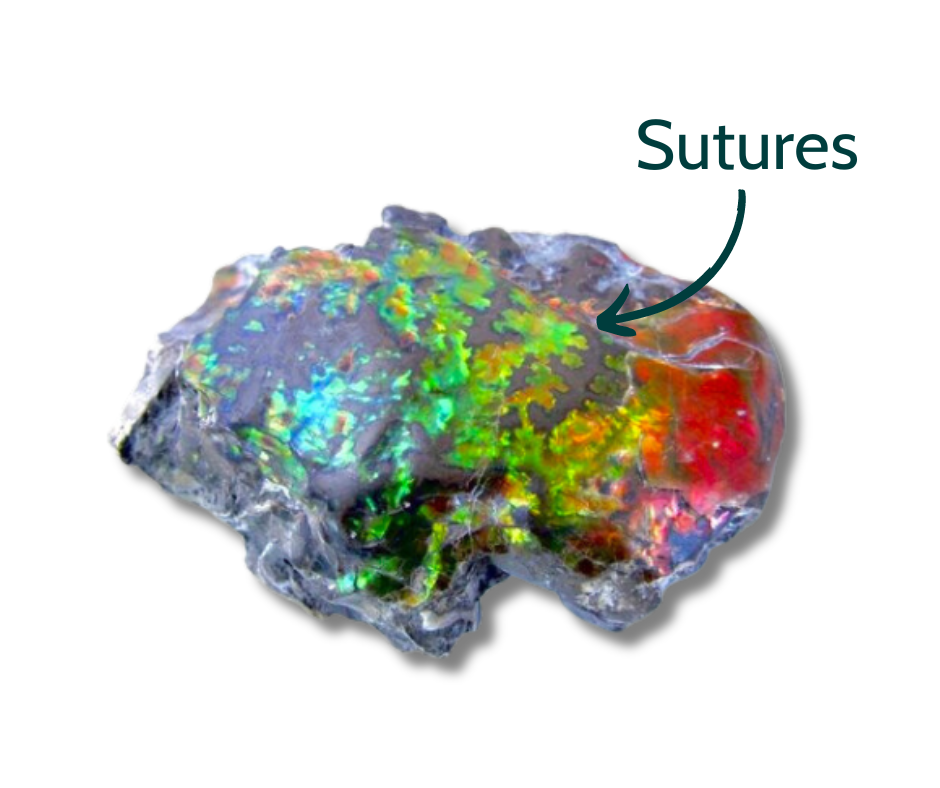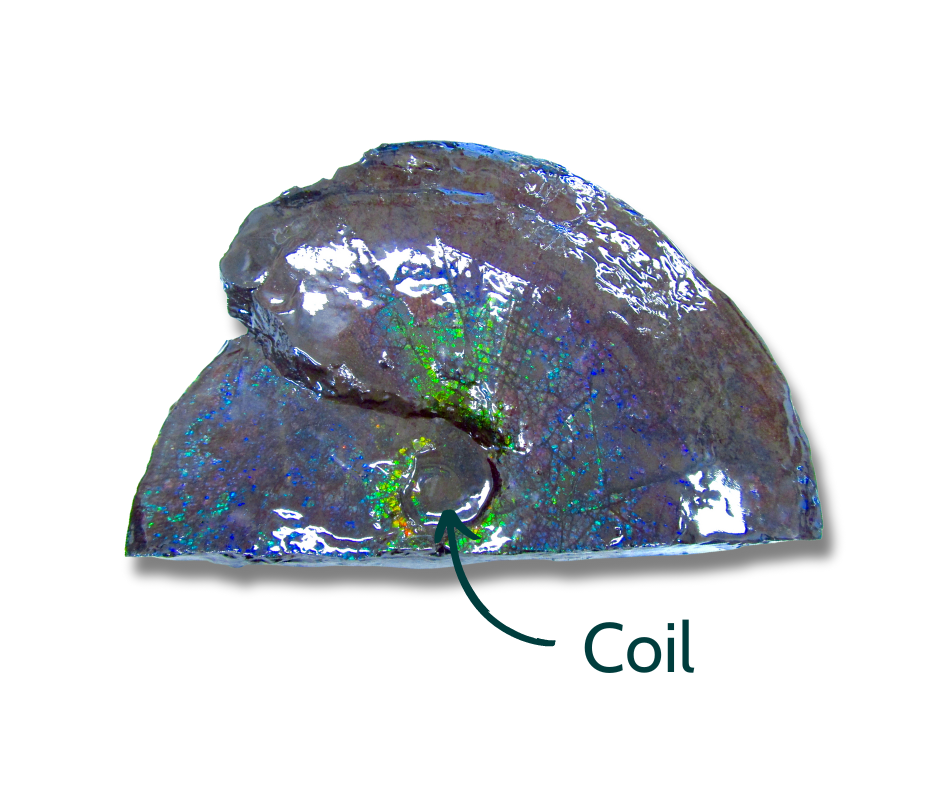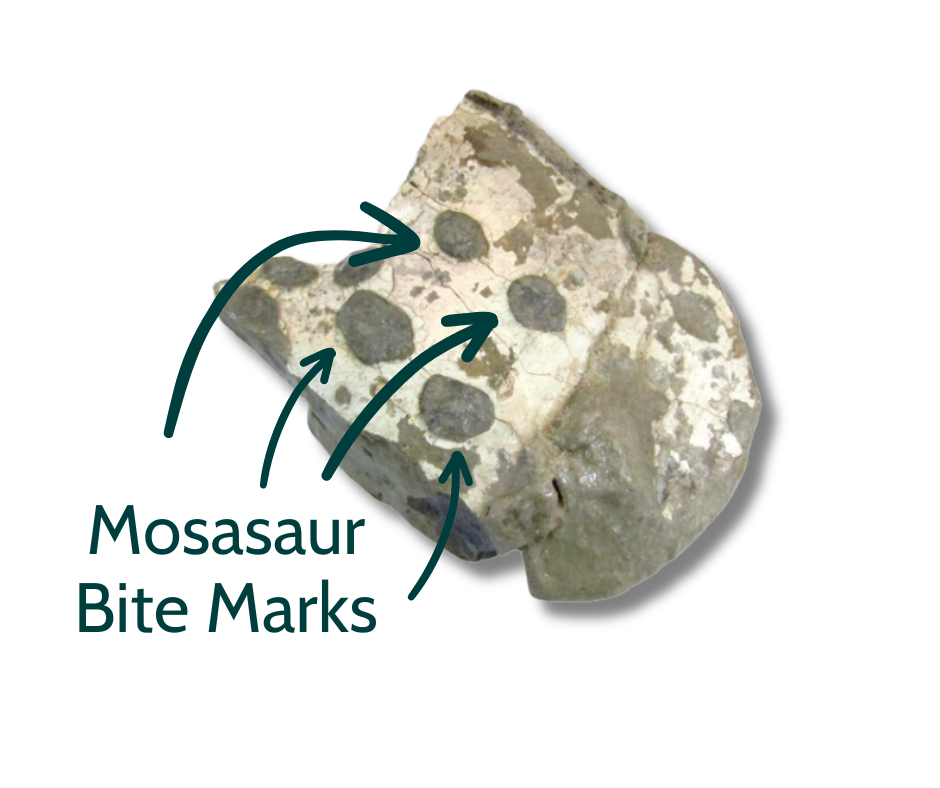Understanding Ammonites
Ammonites, the common name for ammonoids, are an extinct marine mollusk. Despite the modern chambered nautilus species looking very similar to an ammonite, the most closely related creatures to ammonites today are octopuses, squid and cuttlefish. They flourished during the Devonian period and along with the dinosaurs, disappeared during the Cretaceous-Paleogene extinction event.
Ammonites were once found all across the world and consequently had many diverse and unique features. Below we will discuss a few important and distinctive anatomical features of these amazing cephalopods.
Horns
In Alberta, there are three different species of ammonites found: Placenticeras costatum, Placenticeras intercalare and Placenticeras meeki. These variations of ammonite vary in anatomical appearance. For example, the rarer Placenticeras intercalare possesses horns which are protrusions that follow the inner spiral of the sea creature, whereas Placenticeras meeki has a smooth and flat surface.
Since extensive research about ammonites and ammolite is not conducted very often, our knowledge is limited. Therefore, in some cases, there will be more than one theory to explain irregularities. Sexual dimorphism has been used to explain horned fossils. Since there were many more females than males in the ammonite world, and about 1:4 horned fossils, some believe that the fossils with these protrusions are in fact males.
The horns on Placenticeras intercalare are usually evenly spaced in two concentric rings along the spiral from the protoconch out to the edge of the living chamber. It is believed that males had this structure for ornamental and defensive purposes since ammonites were prey to one of the biggest-brained predators of its time, the mosasaurus.
In certain pieces of jewellery, these horns will appear in the ammolite. However, this phenomenon happens very rarely and the pieces that contain these protrusions are highly valued.
Sutures
The shell of the ammonite consists of chambers joined together by sutures. Suture patterns have varied forms depending on the subclass of cephalopod. There are nautiloid, goniatitic, ceratic and ammonitic suture patterns that slightly differ in appearance. Over millions of years, the suture patterns of the ammonites moved towards greater complexity. Unlike nautiloids which have "straight" and simple septa, the septa of ammonites evolved very complex undulations which gave greater strength to a thin shell. The contact of these septa with the external shell is called a suture.
Sutures are very distinctive and are an important aid in the classification of ammonites. Oil companies have been known to make use of this factor when core sampling. If an ammonite is found, the soil can be dated since the sutures of a 100-million-year-old ammonite fossil will differ from a 65-million-year-old shell.
Suture patterns are not common in jewellery, as they are rarely coloured. Gemstones with such sutures are highly valued and prized. However, fossils often contain sutures, though mostly uncoloured.
Chambers
The chambered portion of a cephalopod shell is called a phragmocone. The dividing walls that separate the chambers are called septa, which make camerae (space between two adjacent septa). The camerae are also linked by a siphuncle which creates buoyancy by gas exchange.
Ammonites grew by adding new and bigger chambers. The largest ammonite that has been discovered was 8.5ft in diameter! The squid-like part of the animal (soft-body) lived inside the last chamber which was also the biggest. In females, the chambers also contained the eggs.
When ammonites died, they would sink to the bottom of the sea and be engulfed in the deep mud bottom. The chambers of the shell were then filled with mud which became hard rock over millions of years.
In some fossils, these anatomical features are not discernible since the preservation of the shell over millions of years was affected. However, in other fossils the chambers are clearly visible. The siphuncle is rarely preserved so pieces that have this feature are valuable.
Coil
The coil of the ammonite shell has often been sought after for its Feng Shui properties. The spiral also follows the Fibonacci sequence which is endless. Therefore, the symbol of infinity is associated with ammonites.
Some fossils have beautifully preserved coils at their centre while others may not show any sign of a coil. There are also two different reoccurring types of coils; an outward coil and the common inward coil. Fossils that display a spiral will be more highly valued than one that does not.
Mosasaur Bite Marks
During the late Cretaceous (70-66 million years ago), a big marine lizard, called a mosasaur, preyed on ammonites. Since ammonites went extinct approximately 65 million years ago, some believe that the mosasaur combined with the K-T extinction caused ammonites to be wiped out.
When a mosasaur bit into an ammonite to crack their shell open and capture the creature inside, the broken shell was left behind and deposited on the ocean floor. The shell would then sink into the mud and in some cases, intact mosasaur bites on the surface of the shell would be fossilized.
Mosasaur bites on the ammonite shell can be distinguished by a dark rough spot indented in the shell. However, some researchers believe that these marks may instead be home scars from another marine mollusk called a limpet, rather than a bite mark from the mosasaur.
Regardless, these marks tend to be valuable on fossils. However, they are not often found in jewellery as it is not a desirable characteristic in a gemstone.





